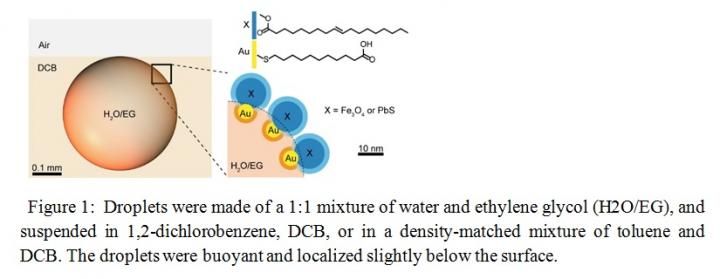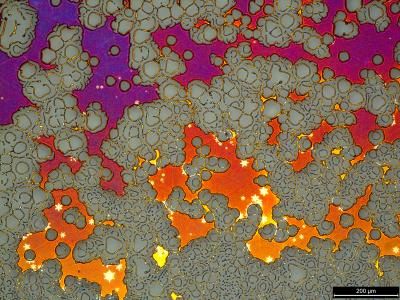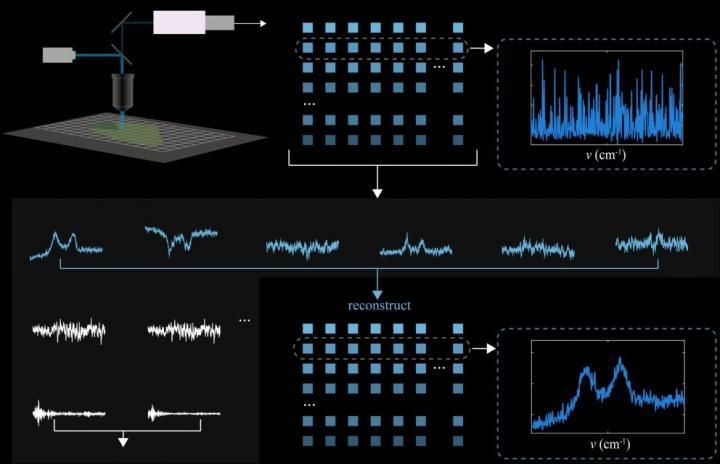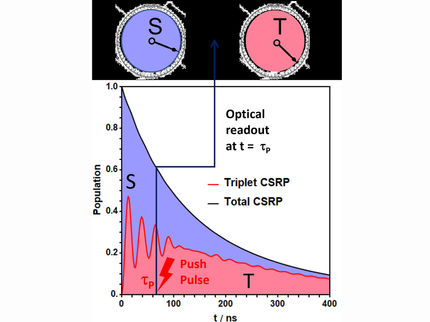Radical approach for brighter LEDs
Scientists have discovered that semiconducting molecules with unpaired electrons, termed 'radicals' can be used to fabricate very efficient organic-light-emitting diodes (OLEDs), exploiting their quantum mechanical 'spin' property to overcome efficiency limitations for traditional, non-radical materials.

LED, symbolic picture
PublicDomainPictures; pixabay.com; CC0
Radicals are usually noted for their high chemical reactivity and often detrimental effects, from human health to the ozone layer. Now radical-based OLEDs could form the basis for next-generation displays and lighting technologies.
The team from the University of Cambridge and Jilin University describe how stabilised radicals form electronic states known as 'doublets', on account of the spin character being either 'up' or 'down.'
Running electricity through these radical-based OLEDs leads to the formation of bright-doublet excited states which emit deep-red light with near-100% efficiency. For traditional compounds (i.e. non-radicals without an unpaired electron), quantum-mechanical-spin considerations dictate that charge injection forms 25% bright-'singlet' and 75% dark-'triplet' states in OLED operation. Radicals pose an elegant solution to this fundamental spin problem which has troubled researchers ever since the development of OLEDs from the 1980s.
Dr Emrys Evans, a lead co-author who works in Professor Sir Richard Friend's group at the Cavendish Laboratory, said "On the face of it, radicals in OLEDs shouldn't really work, which makes our results so surprising. The radicals themselves are unusually emissive, and they operate in the OLEDs with unusual physics."
When isolated in a host matrix and excited with a laser, the radicals, atypically, have close to unity efficiency for light emission. The highly emissive behaviour was translated to highly emissive LEDs, but with another twist: in the devices, the electrical current injects electrons into the unpaired electron energy level of the radical, and pulls electrons out of a lower-lying level, and another portion of the molecule, to form bright-doublet excited states.
In future, efficient blue- and green-light radical-based diodes could appear with further materials innovation. The researchers are working on exploiting radicals beyond lighting applications, and expect radicals to impact other branches of organic electronics research.
Professor Feng Li from Jilin University is a visitor at the Cavendish Laboratory and corresponding author for the work. He said: "The collaboration between the universities and research groups has been instrumental to the success of this work. In future, I hope that we can demonstrate more radical-based solutions for organic electronics."
Original publication
Most read news
Original publication
Xin Ai, Emrys W. Evans, Shengzhi Dong, Alexander J. Gillett, Haoqing Guo, Yingxin Chen, Timothy J. H. Hele, Richard H. Friend & Feng Li; "Efficient radical-based light-emitting diodes with doublet emission"; Nature; 2018
Topics
Organizations
Other news from the department science

Get the chemical industry in your inbox
By submitting this form you agree that LUMITOS AG will send you the newsletter(s) selected above by email. Your data will not be passed on to third parties. Your data will be stored and processed in accordance with our data protection regulations. LUMITOS may contact you by email for the purpose of advertising or market and opinion surveys. You can revoke your consent at any time without giving reasons to LUMITOS AG, Ernst-Augustin-Str. 2, 12489 Berlin, Germany or by e-mail at revoke@lumitos.com with effect for the future. In addition, each email contains a link to unsubscribe from the corresponding newsletter.
Most read news
More news from our other portals
Last viewed contents

Covestro launches industrial production of plastics using carbon dioxide - Process helps cut the use of crude oil
New model predicts once-mysterious chemical reactions

Multiresponsive nanosurfactant constructs tiny chemical factory

Luminescent nano-architectures of gallium arsenide

Huge grains of copper promote better graphene growth
Merck Raises Profit Forecast for 2016

GE Water & Process Technologies - Trevose, USA

Graphene mapping 50 times faster

New path suggested for nuclear fusion
A new synthesis method for three-dimensional nanocarbons - Connecting carbon by catalysis to create octagonal structures
ABB wins $27 million solar orders in Italy



























































